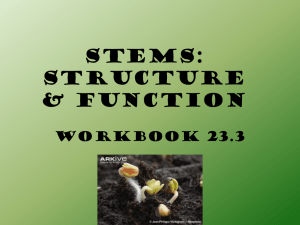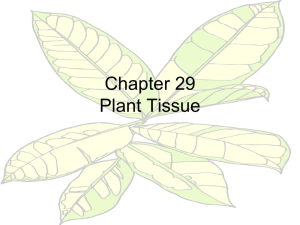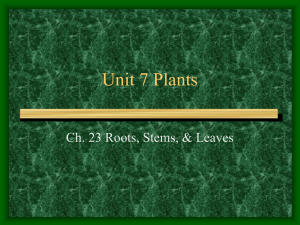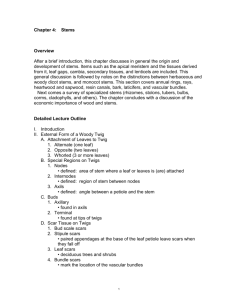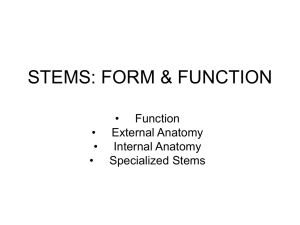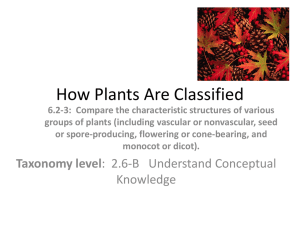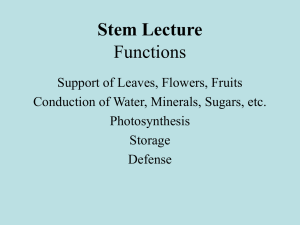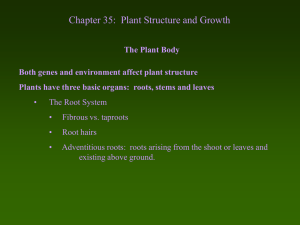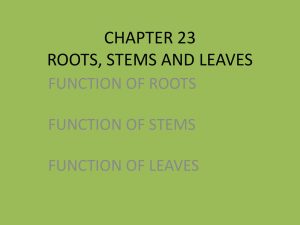23.3_Stems
advertisement
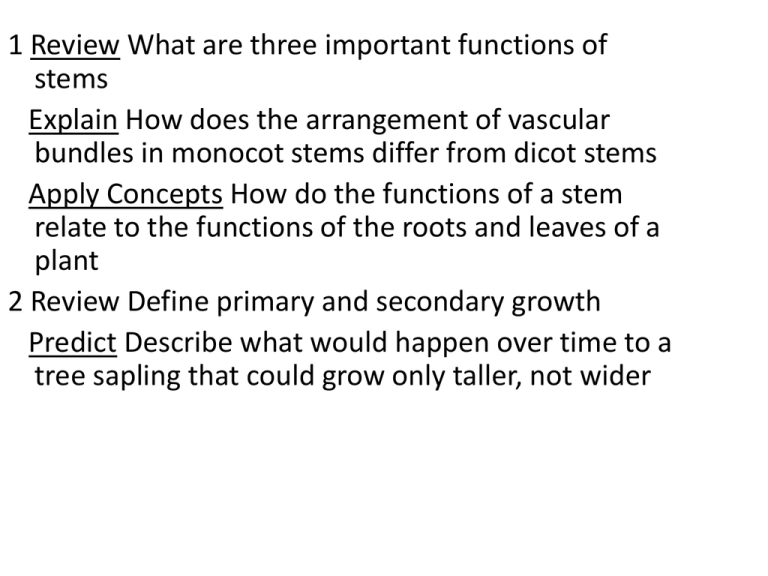
1 Review What are three important functions of stems Explain How does the arrangement of vascular bundles in monocot stems differ from dicot stems Apply Concepts How do the functions of a stem relate to the functions of the roots and leaves of a plant 2 Review Define primary and secondary growth Predict Describe what would happen over time to a tree sapling that could grow only taller, not wider CH 23 PLANT STRUCTURE AND FUNCTION 23.3 Stems Stem Functions Stems produce leaves, branches, and flowers Stems hold leaves up to the sun Stems transport substances throughout the plant. Anatomy of a Stem Epidermal cells have thick cell walls and a waxy protective coating. Anatomy of a Stem Nodes Where leaves are attached Buds Contain apical meristems that can produce new stems and leaves Stems produce woody tissue in larger plants. Monocot Stems Clusters of xylem and phloem tissue are scattered throughout the stem Ground tissue is fairly uniform consisting mainly of parenchyma cells. Dicot Stems Vascular bundles are arranged in a cylinder, or ring Pith Parenchyma cells inside the ring of vascular tissue Cortex Parenchyma cells outside the ring of vascular tissue. Primary Growth Growth that occurs at the apical meristems. Secondary Growth Stems increase in thickness to support larger plant. Secondary Growth Very common among dicots and non-flowering seed plants such as pines Rare in monocots Dicots have meristems within stems and roots that produce true secondary growth Dicots can grow much larger. Conifers and Dicots Secondary growth takes place in meristems called: Vascular cambium Produces vascular tissues and increases the thickness of stems over time Cork cambium Produces the outer covering of stems. Vascular cambium appears as a thin, cylindrical layer of cells between the xylem and phloem of each vascular bundle. Divisions in the vascular cambium give rise to new layers of xylem and phloem Cambium continues to produce new layers of vascular tissue each year, causing the stem to become thicker. Formation of Wood Most of “wood” is actually layers of secondary xylem Heartwood Older xylem near the center of the stem no longer conducts water. Sapwood Active in fluid transport and is usually lighter in color. Tree Rings Spring growth Vascular cambium begins to grow rapidly, producing large, light-colored xylem cells, resulting in a lightcolored layer of early wood As growing season continues Cells grow less and have thicker cell walls, resulting in a layer of darker wood Thick rings good growing conditions and thing rings poor growing conditions. Formation of Bark Bark All tissues found outside the vascular cambium Tissues include phloem, the cork cambium, and cork. Cork cambium produces a thick, protective layer of waterproof cork that prevents water loss.
